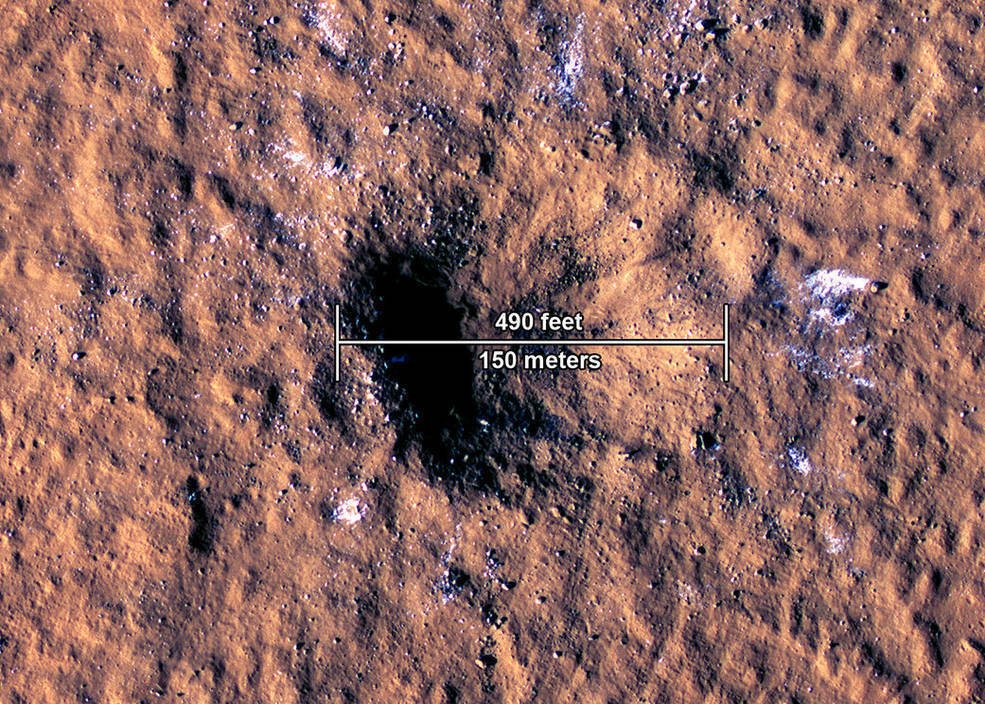Plans to send astronauts to Mars seem to be working out for the National Aeronautics and Space Administration (NASA).
A magnitude 4 marsquake (as opposed to an earthquake here on Earth) on Mars in December last year This week, scientists finally figured out what actually happened and what it could mean for plans to send astronauts to Mars.
“Working together, two NASA spacecraft —one on the ground and one in orbit—detected a large meteorite that slammed into the Red Planet,” says NASA.
Side note: Mars is called the Red Planet because (you guessed it)… it looks red due to its oxidized soil. It’s not actually red in colour.
We will rock you
This week, NASA said scientists now know the shake was caused by a meteoroid that struck Mars. It’s also estimated to be the biggest seen on Mars since the agency began exploring the planet.
“What’s more, the meteoroid excavated boulder-size chunks of ice buried closer to the Martian equator than ever found before – a discovery with implications for NASA’s future plans to send astronauts to the Red Planet,” said NASA.

Credits: NASA/JPL-Caltech/University of Arizona.
Scientists looked at images before and after the marsquake and spotted something new, describing it as a “yawning crater”.
NASA has detailed the event in not one, but two papers published this week.
The impact happened in a region called Amazonis Planitia. It blasted a crater an estimated 150 meters across and 21 meters deep.
“Some of the ejecta thrown by the impact flew as far as 23 miles (37 kilometers) away. The meteoroid is estimated to have spanned 16 to 39 feet (5 to 12 meters) – small enough that it would have burned up in Earth’s atmosphere, but not in Mars’ thin atmosphere, which is just 1% as dense as our planet’s,” added NASA.
Read More: NASA’s asteroid deflection mission was more successful than expected. An expert explains how
NASA says it believes this caused one of the largest craters they’ve witnessed forming in the solar system. Though larger craters exist on Mars, NASA says they’re significantly older and predate their arrival.
“It’s unprecedented to find a fresh impact of this size…It’s an exciting moment in geologic history, and we got to witness it,” says Ingrid Daubar of Brown University, who leads InSight’s Impact Science Working Group.